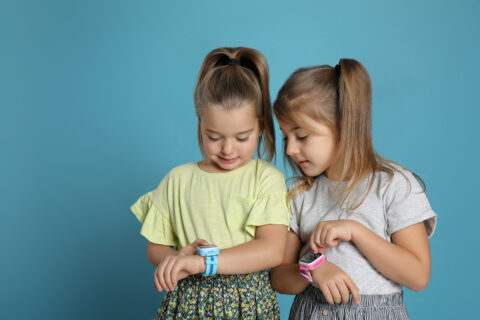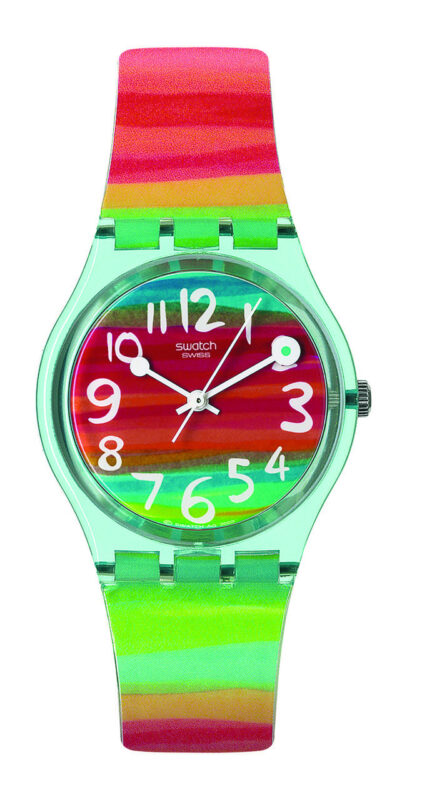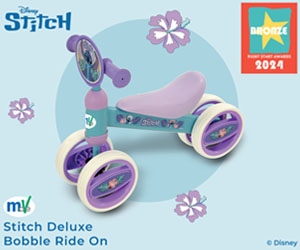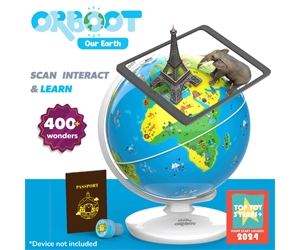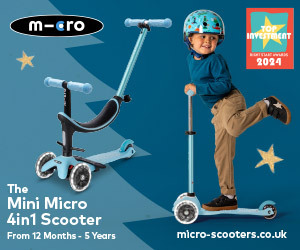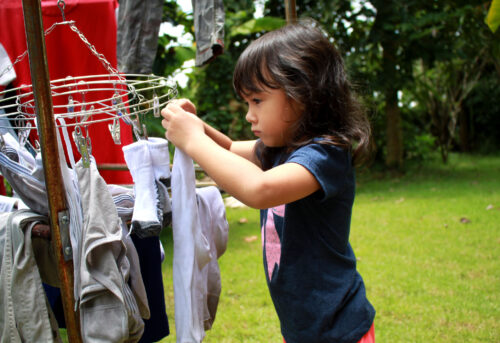Choosing a watch
Children typically start learning how to tell the time aged five or six, so buying them a watch at this stage can be a useful visual aid. But there’s also something special about presenting a child with their first watch, like a rite of passage.
Thankfully, the market for younger kids’ watches isn’t too complicated for parents to navigate. You have digital, analogue and smartwatch styles to choose from. Some styles help children learn by putting useful hints on the dial, like ‘past’ and ‘to’, to serve as reminders. Most are colourful and some are branded with their favourite Disney, Marvel and Star Wars characters, as well as popular cartoons and computer game references.
When is the right time?
There’s no right or wrong time. Even a three-year-old with little concept of time might love wearing a watch because that’s what their parents or siblings do. A child who’s old enough to read the time can wear a watch every day if they like. When they start doing things independently, going round to friends’ houses or to school for instance, a watch can help them stay connected and on schedule and might ease parental worries. Ultimately, wearing a watch is a personal choice. Some kids will love it and others will be desperate to take off what you’ve strapped to their wrist.
Selecting the material
No matter how hard you try, a child isn’t likely to heed your warnings about being delicate or gentle with a watch. That’s why most kids’ watches are made of robust and waterproof materials like stainless steel, plastic and silicone. For children who have very sensitive skin, look for nickel-free alloys if you’re buying a watch with a metal case, or watches built entirely in plastic. Fabric straps are a good alternative if your child has grown out of the jumping-in-puddles phase, but don’t get them anywhere near a swimming pool.
If you’re raising a thrill-seeking daredevil, look for watches that have plastic instead of glass built into the case. This way, even if they crack or smash the watch, you won’t risk shards of glass flying around.
Getting the right size
Anything too big or heavy isn’t going to be comfortable. For smaller children, look for streamlined fabric or plastic straps with a lightweight body and a small dial size. Older children can handle the heavier weight of a metal case.
Digital or analogue?
Analogue
watches have an hour and minute hand, whereas digital watches just use numbers to tell the time. Digital
tend to be easier for kids, but they don’t allow any opportunity to become familiar with a traditional clock face.
What can be frustrating for parents is that digital watches have the
added features that kids swoon over, like backlights and stopwatches. If
they’ve seen you wearing a smartwatch, they’re likely to want to copy
you with a child-friendly version and many options are available.
Probably the best advice is to stick to analogue for your child’s
first introduction to watches. They look great and will help them learn
the fundamentals of telling the time in a more engaging and colourful
way. Then, if they take to wearing a watch like a duck to water, you can
expand their repertoire with a digital watch or a smartwatch.
Extra functions
Older kids might appreciate additional functionality in their watch,
but smaller children don’t need much more than the basics, like water
resistance and maybe a helpful backlight. For most children, all the
bells and whistles in the world won’t distract from the wrong colour or
the fact that you haven’t bought the Frozen-themed watch they wanted.
Rather than getting bogged down in functionality, focus on core
decisions like analogue or digital, fabric or plastic strap, patterned
or plain. As your child gets older, you can decide whether a smartwatch
with greater levels of functionality is suitable.
Telling the time
Although we live in a digital world, the fundamental basics of
teaching time have not changed. They are still based around an analogue
clock, and this is how time is taught in primary schools.
Although basic smartwatches, fitness trackers and digital watches are
especially popular with children, they don’t teach the concepts of
‘past’ and ‘to’. If children are only exposed to digital displays, the
time will always be read as ’12.15 or ’14.45’ with no concept of these
being quarter to or quarter past the hour.
For children learning to tell the time, the best recommendation is a
traditional watch that includes numbers, rather than roman numerals.
Using a watch with numbers allows children to grasp the basic concept of
time more easily.
Wearing a watch
Getting your child to wear a watch is easy, as there are so many
funky and fun models available. Children’s watches are often brightly
coloured or feature characters from well-known TV shows and films. These
will naturally appeal to younger children who will just love to have
them on their wrist and show them to their friends.
Visit www.watchpilot.com/collections/kids-watches
https://www.watchpilot.com/products/swatch-color-the-sky-core-collection-womens-red-watch-gs124


